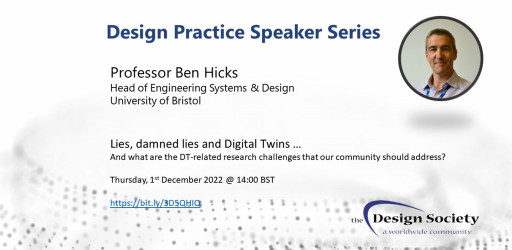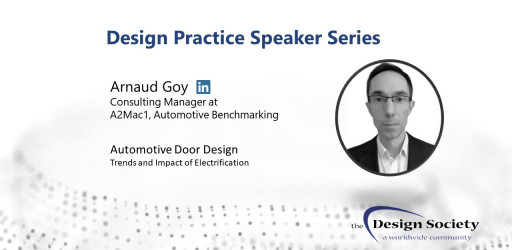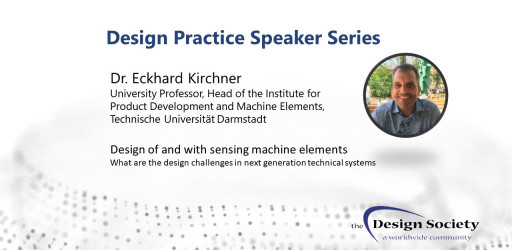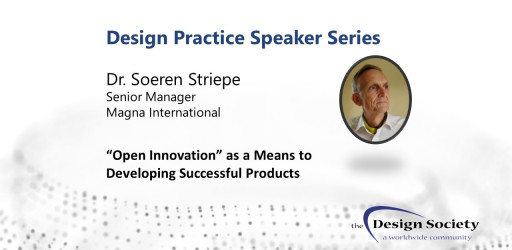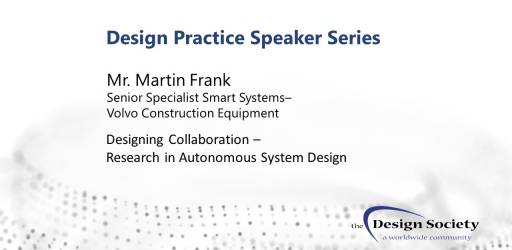van Boeijen, Annemiek // 2013
This paper answers the question, how the dimensions that have been developed by anthropologists to typify cultures, can support designers in user-centred design processes. An analysis and evaluation ...
Anacker, Harald; Schierbaum, Thomas; Dumitrescu, Roman; Gausemeier, Jürgen // 2013
Recently, mechatronics as a self-contained discipline has undoubtedly shaped the development of technical systems. Mechatronics stands for the close interaction of mechanics, electronics, control ...
Huggins, Bernard James; Linda, Sara; Rane, Sham; Walle, Adam; Dougan, Chris // 2013
A pilot project was arranged between Product Design (PD) students at Glasgow Caledonian University and Engineering Design (ED) students at City University London. The assignment was to produce ...
Schabacker, Michael; Szélig, Nikoletta; Vajna, Sándor // 2013
The current situation in product development is characterized by increasingly dynamic and complex tasks. The development of a product is not a linear process, continuously guided by well-defined ...
Mombeshora, Idai Mendy; Dekoninck, Elies // 2013
As decisions made during the design of a product have a significant impact on environmental performance, it is imperative that environmental considerations become an integral part of the design ...
Spruce, Jon; Evans, Martyn David // 2013
Much research has been conducted into the content of design curricula yet limited research has been undertaken into how early career design professionals view their undergraduate studies, and in turn ...
Aurisicchio, Marco; Bracewell, Rob; Armstrong, Gareth // 2013
In modern engineering projects collaboration between organisations is increasingly common for the purpose of sharing expertise, technology, resources, risk and responsibilities. Design communication ...
Li, Chun Lei; McMahon, Chris; Newnes, Linda // 2013
This paper describes an approach to supporting, in computer-aided design (CAD), the multiple evaluations that occur when engineers bring their expertise to bear, especially in the later phases of the ...
Mengoni, Maura; Peruzzini, Margherita; Raffaeli, Roberto // 2013
Contract furniture design is oriented to develop customized products for the creation of a finished commodity for hospitality, offices, retails, restaurants, stores. It is assuming a growing ...
Winkelman, Paul Martin // 2013
Sustainability issues are slowly being integrated into the design process. What is frequently overlooked is that the pre-existing value system of engineering may be hostile to sustainability ...
Valamanesh, Roozbeh; Shin, Dosun // 2013
Embodiment of a concept has constantly been a preventive factor in creativity when it comes to complex topics. This has been moderated by emergence of digital fabrication since late 80âs. Making ...
Schöfer, Malte; Maranzana, Nicolas; Aoussat, Ameziane; Bersano, Giacomo // 2013
The design process of ever more complex products requires an increasing amount of knowledge originating in ever more distant domains of expertise. However, in order to make the knowledge transfer ...
Jamaludin, Mohd Syafiq; Zulkapli, Muhammad Fadli; Zainal Abidin, Shahriman // 2013
This study is to investigate the use of visual analogy in design characteristics. The main purpose is to provide an understanding of how product design can affect or influence user emotion. Emotion ...
Gopsill, James Anthony; McAlpine, Hamish Charles; Hicks, Ben James // 2013
The communication patterns of engineers has been well researched over the past decades. However, due to the rise of new communication technologies and their speed of inception within society, it can ...
Garrett, David W.; Underwood, Peter J.; Jun, Gyuchan Thomas // 2013
Design students' understanding of design processes and their ability to continually improve on them is a fundamental concern in design education. This paper discusses a curriculum development project ...
Chandra, Sushil // 2013
Designers have to frequently face the two terms: the DNA of design and design signature, though no scientific definitions for these two terms are available. This study attempts to formulate a ...
Chen, Zi Ru // 2013
Design is a group behavior and creativity is the result of social interaction. Digital media are regarded both as the environment in which designers accomplish creative ideas and as a platform of ...
Oh, Gyesik; Hong, Yoo S. // 2013
As competition in the market becomes fierce, companies are required to develop a new product within short duration. One of methods to accelerate the product development is concurrent engineering ...
Vandenhende, Karel // 2013
How can we teach students to design creatively? From the literature on early stages in effective learning processes, we know that for education to be effective, design assignments should evolve from ...
Beger, Anna-Lena; Brezing, Alex; Feldhusen, Jörg // 2013
Topology optimization (TO) is a powerful tool to generate forms for structural parts. Used at the beginning of the design process, it can generally lead to a reduction of iteration loops and an ...
Koskela, Lauri Jaakko; Ballard, Glenn // 2013
Since the 1960’s, there have been many initiatives for promoting theoretical understanding on design. However, in spite of definite progress, there are several puzzles and anomalies in the current ...
Aitamurto, Tanja; Holland, Dónal; Hussain, Sofia // 2013
This article examines the open paradigm in design research and introduces a new conceptualization for ‘open design’ and a three-layer framework to demonstrate the degrees of openness in design ...
Hoffenson, Steven; Dagman, Andreas; Söderberg, Rikard // 2013
Dimensional tolerances are chosen during the product development process to balance quality requirements against manufacturing costs. Designers typically judge how much variance should be allowed ...
Sivaloganathan, Sangarapillai; Shahin, Tamer // 2013
A Graduation Project (or senior capstone design project) is an important constituent of an engineering program. It has several unique characteristics such as: the end product is a proof of product ...

